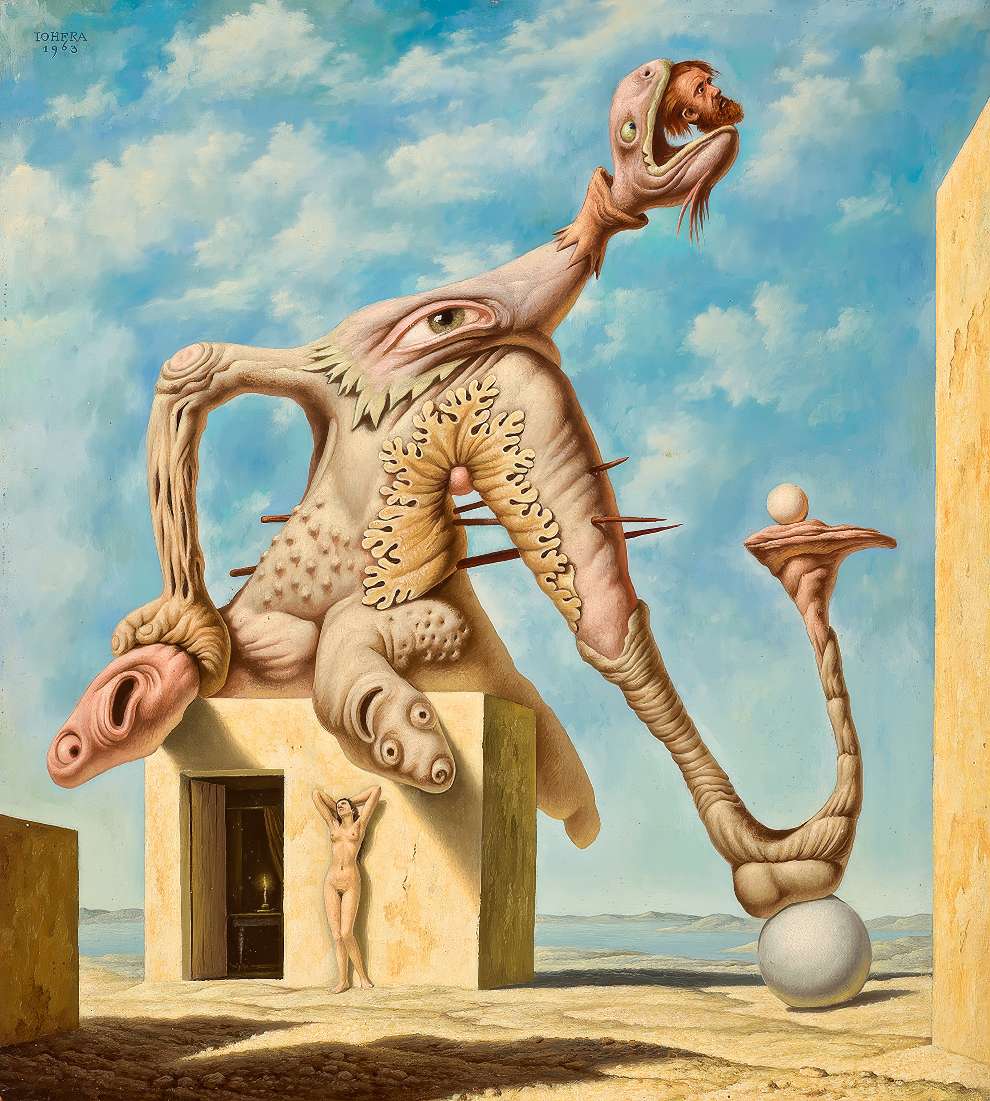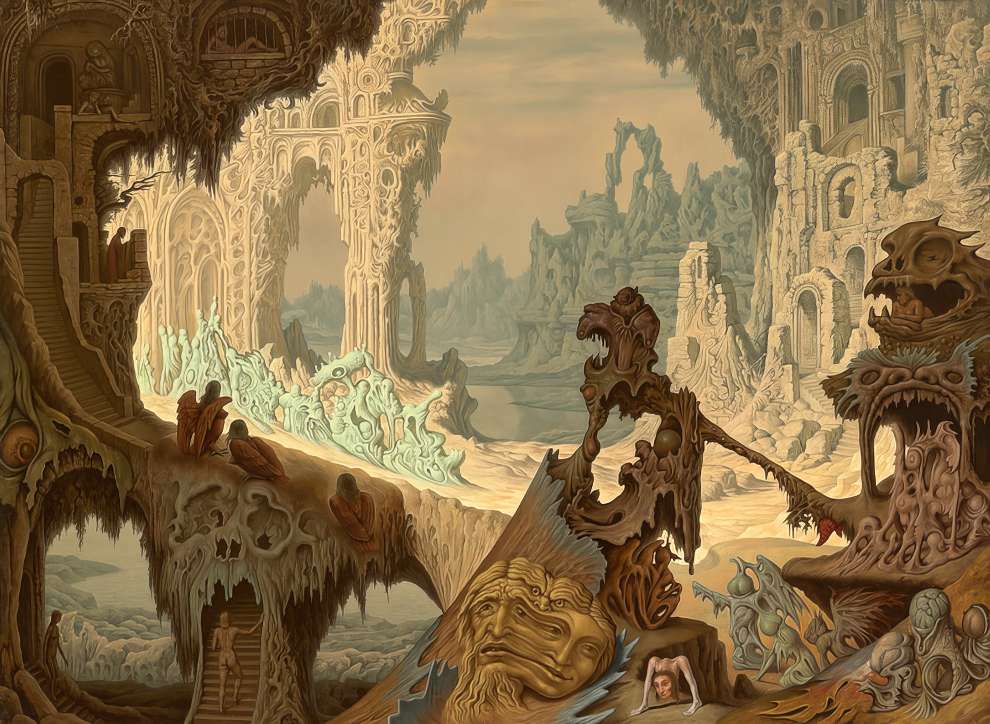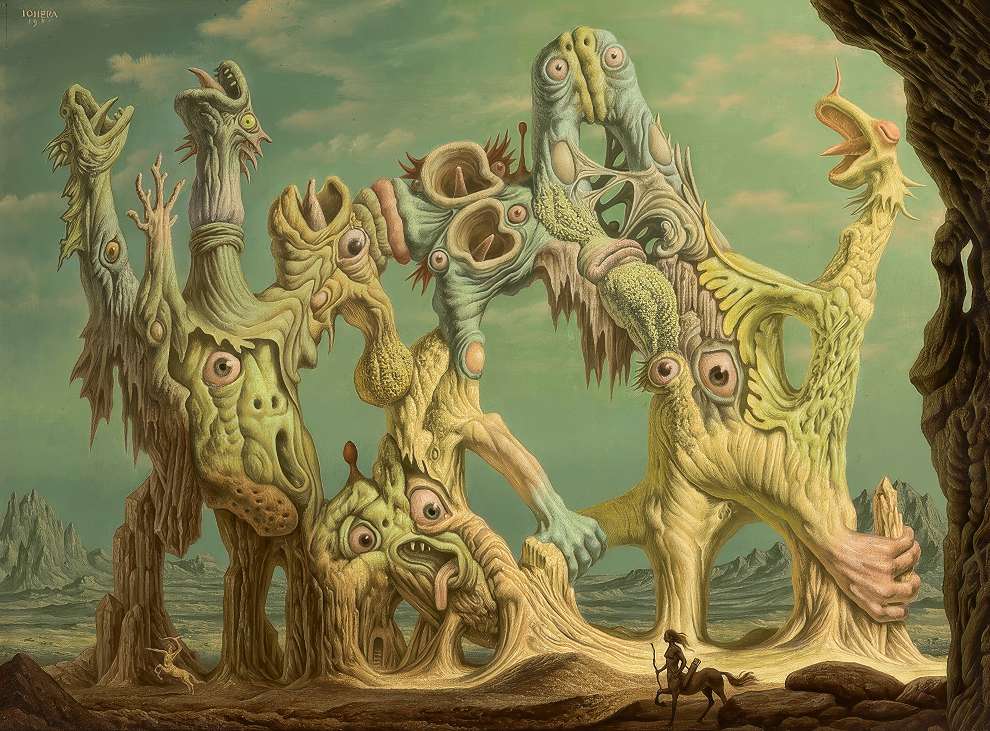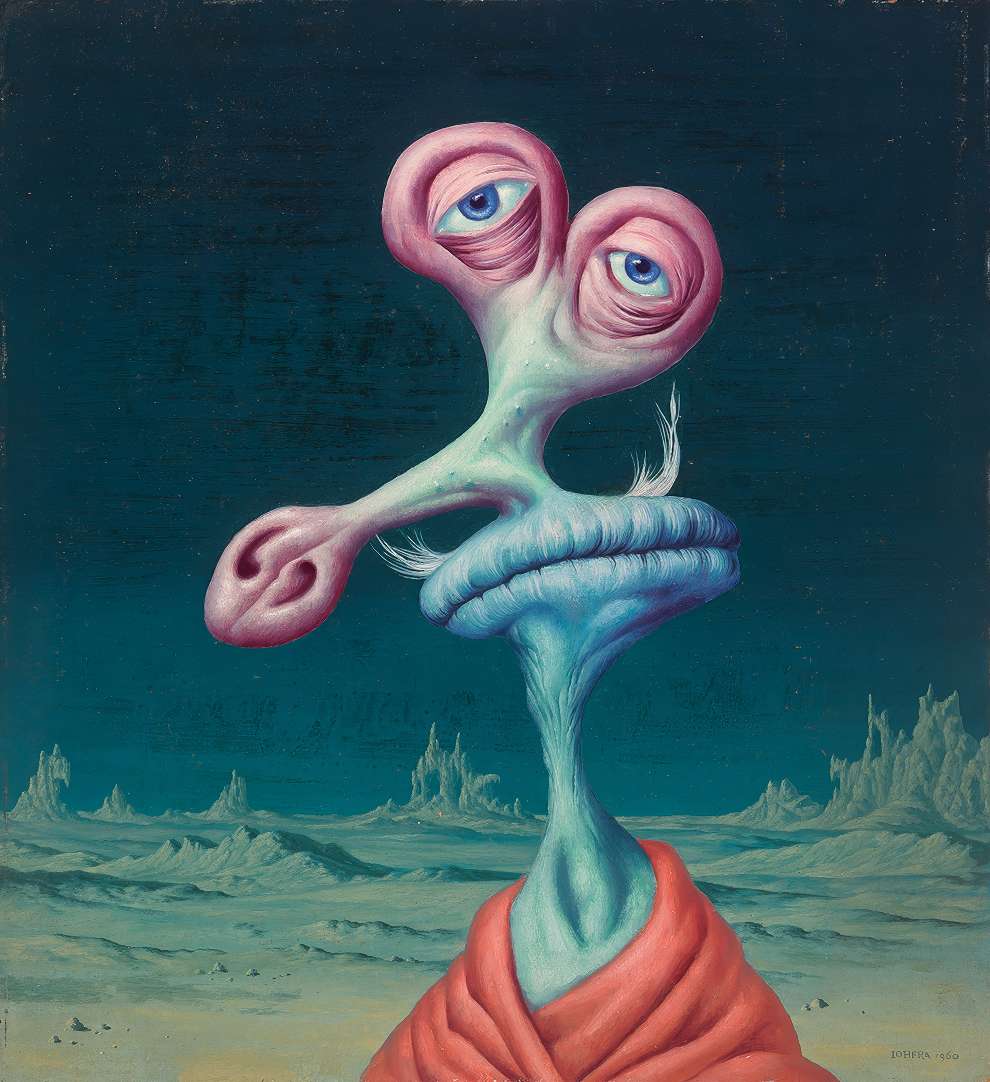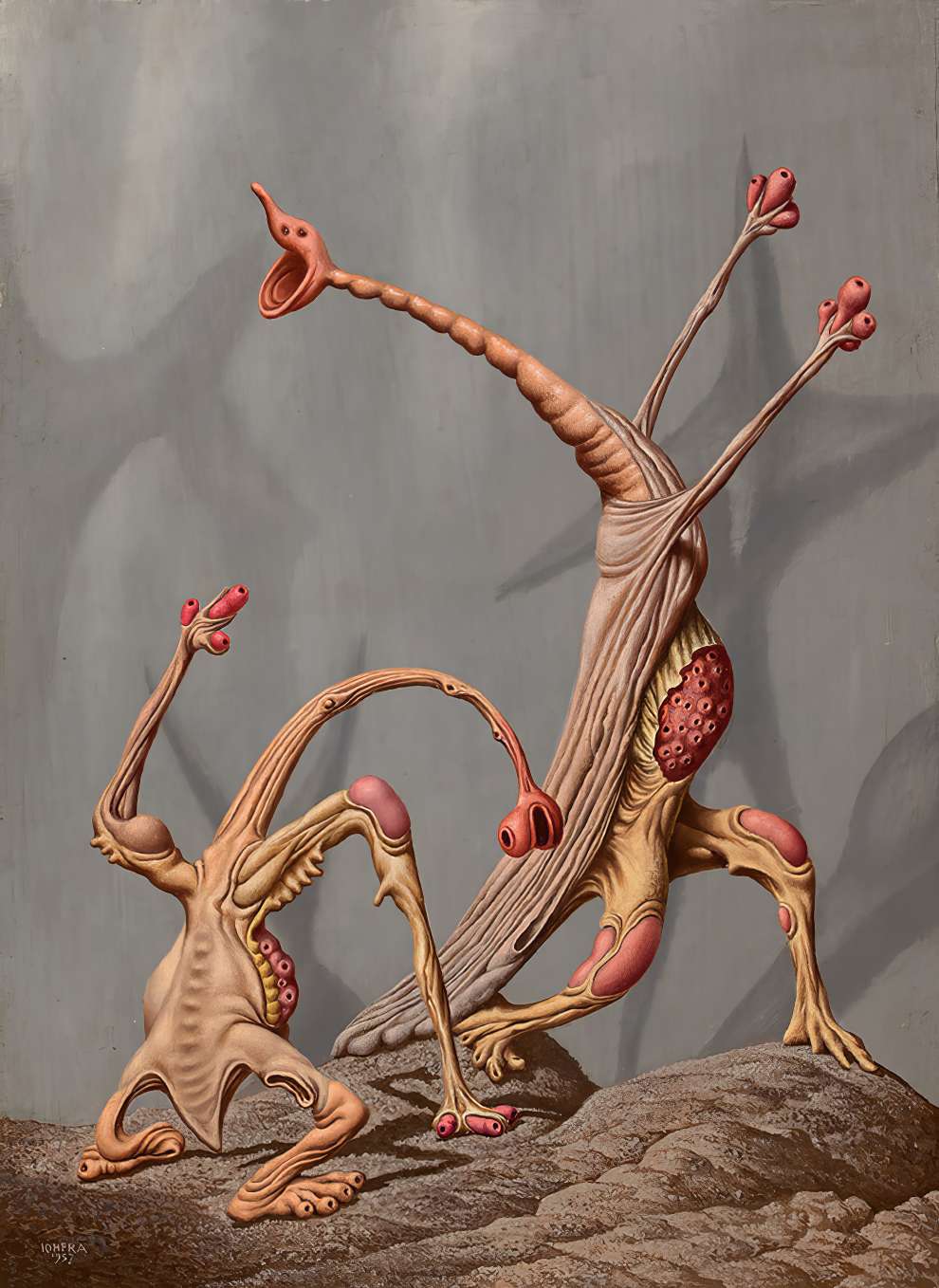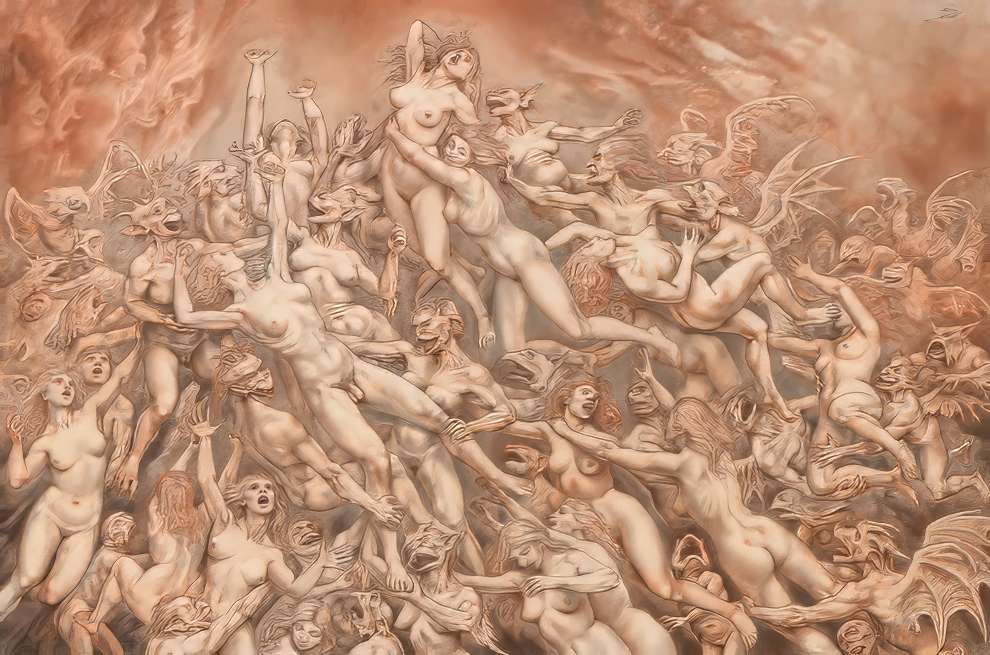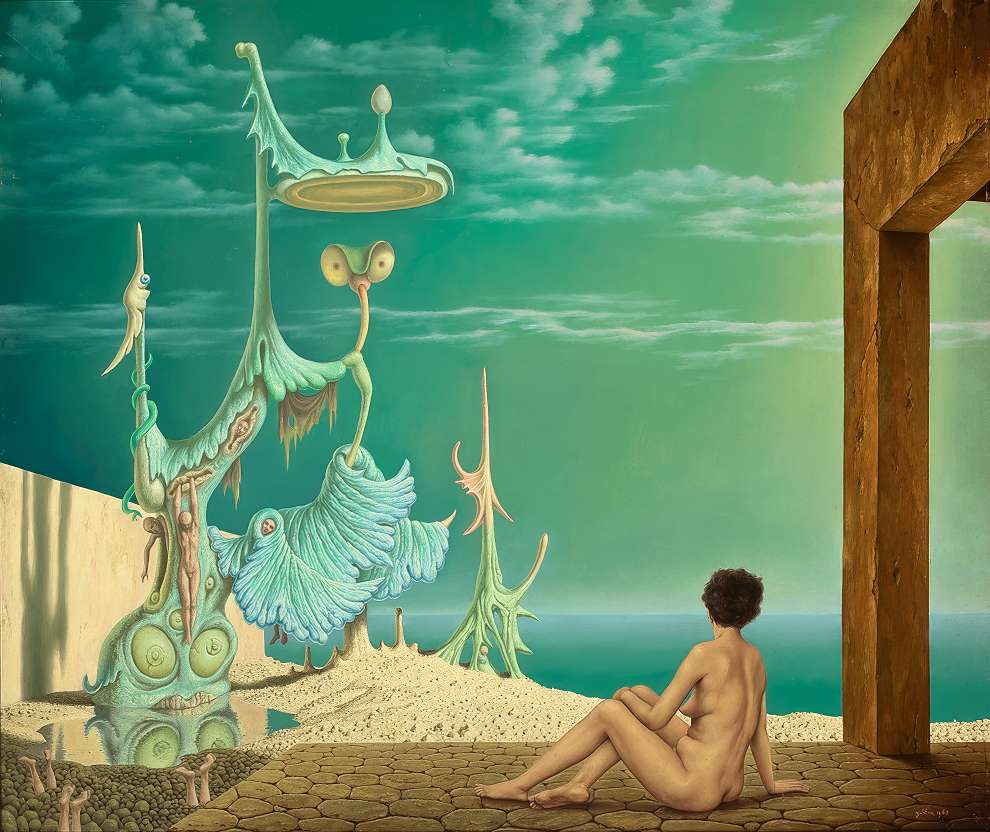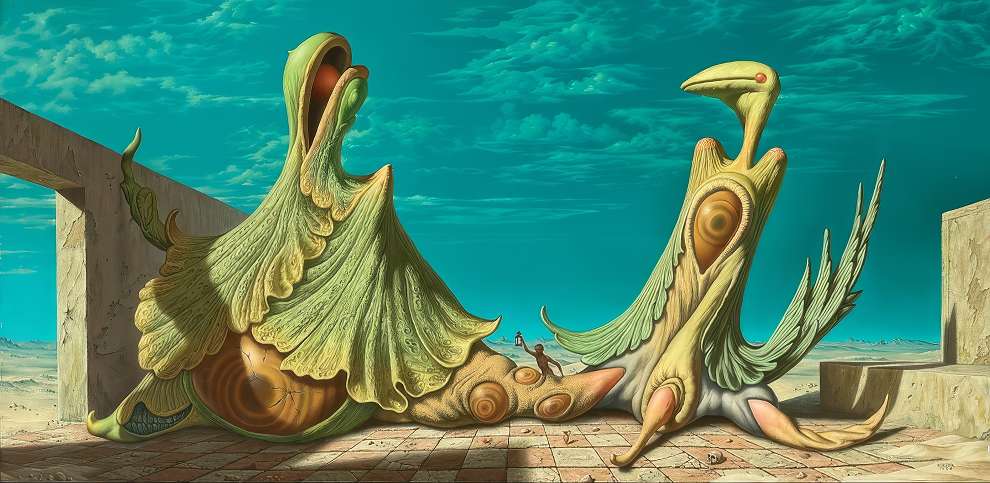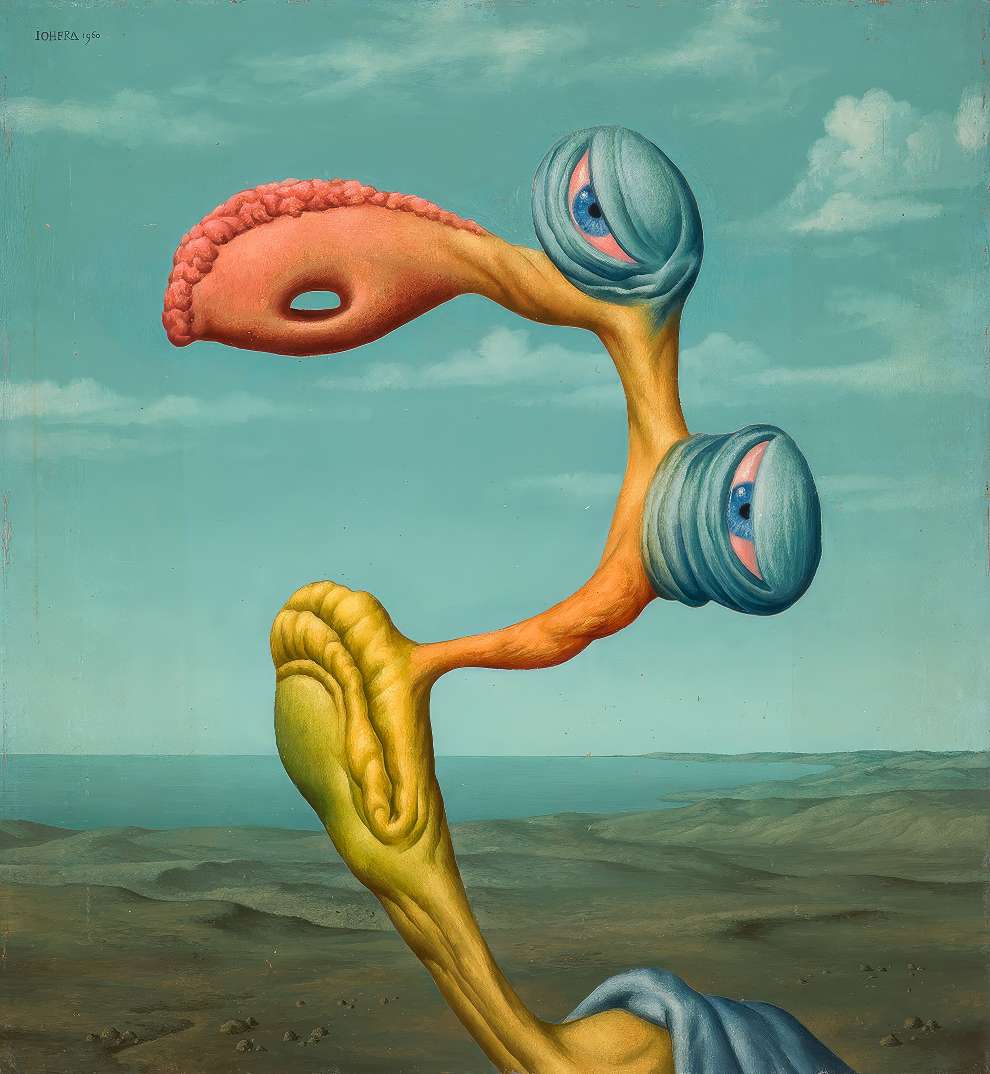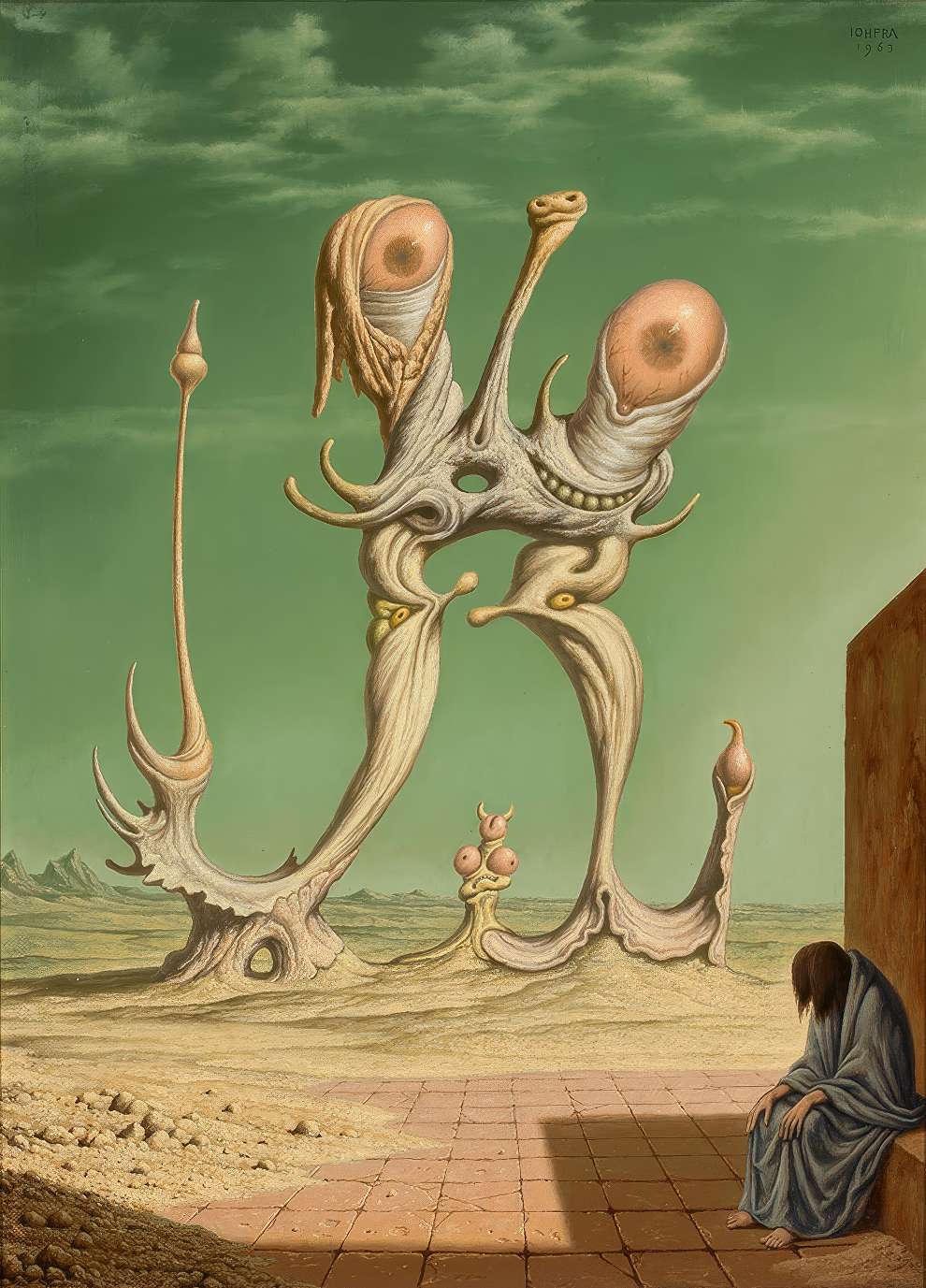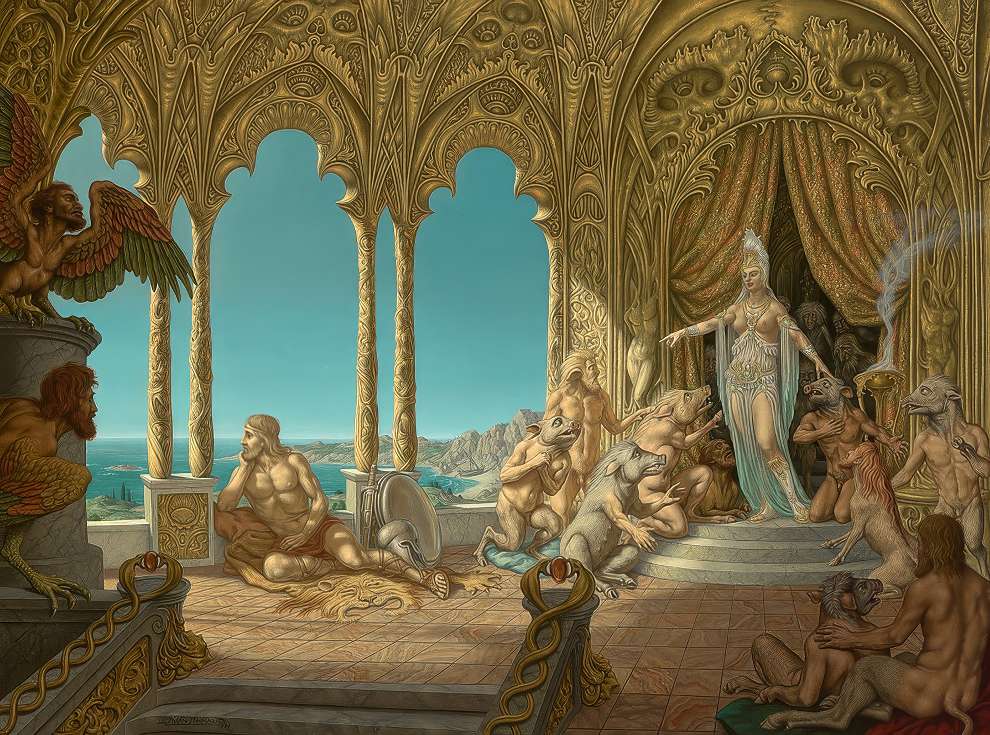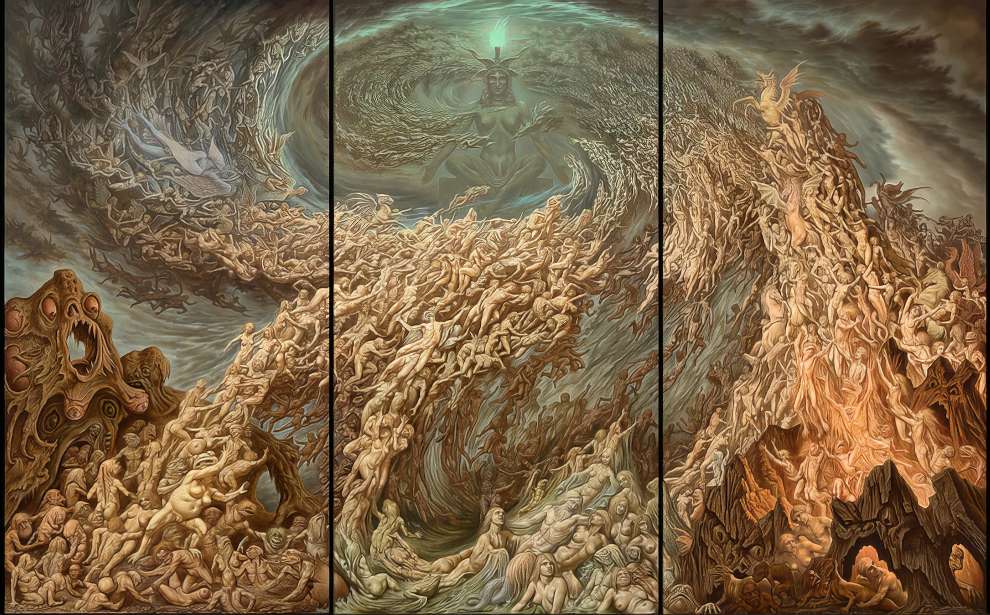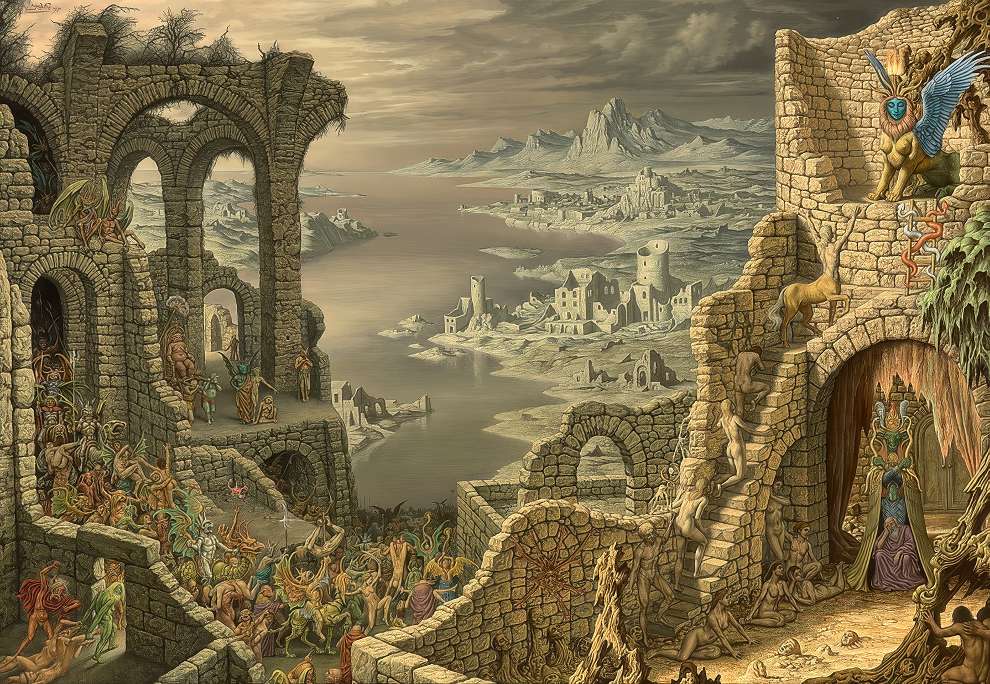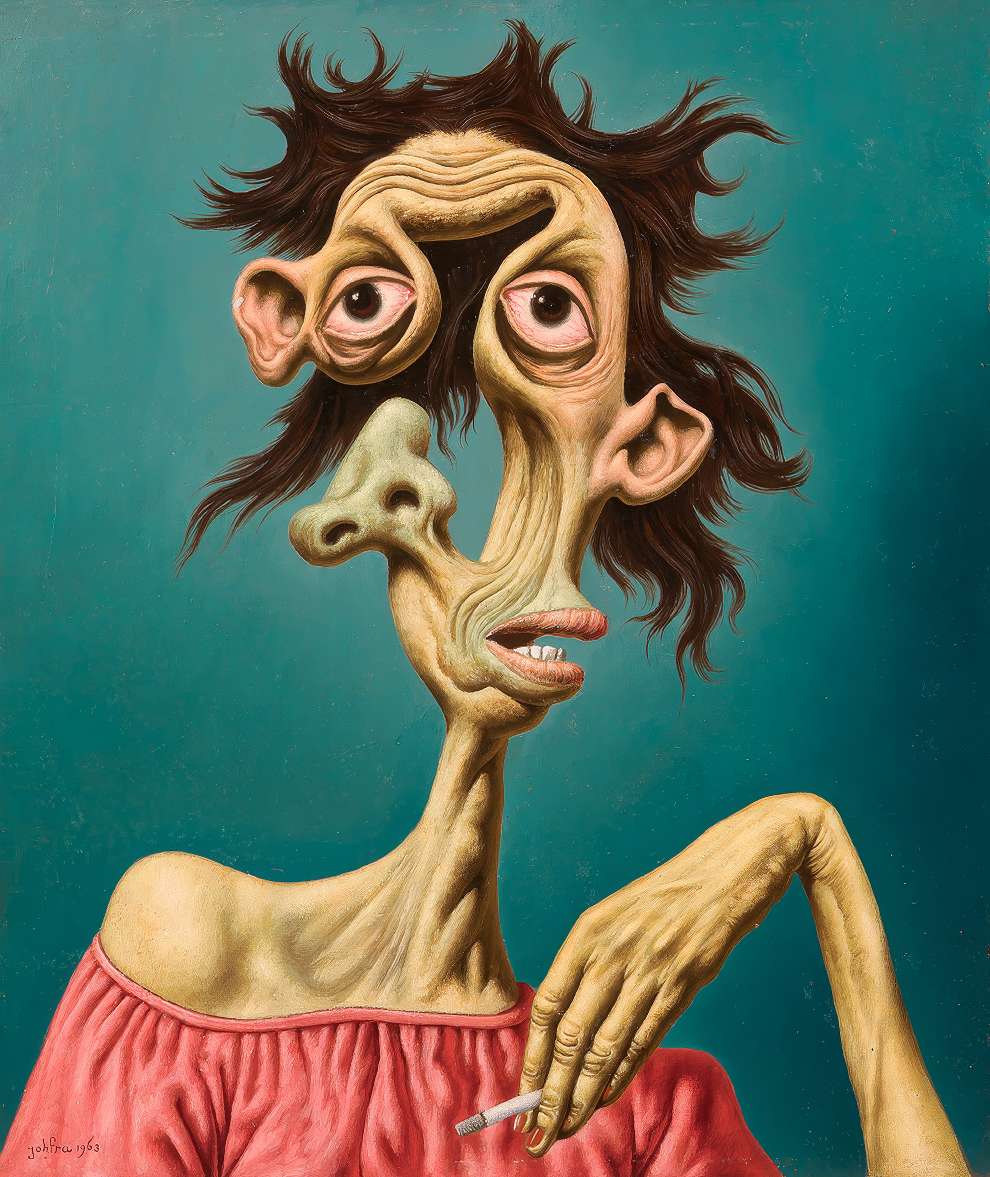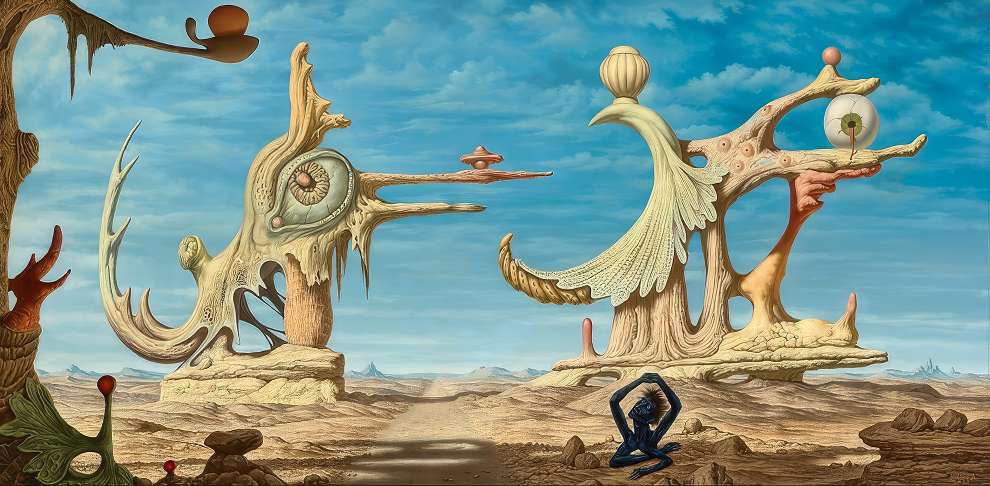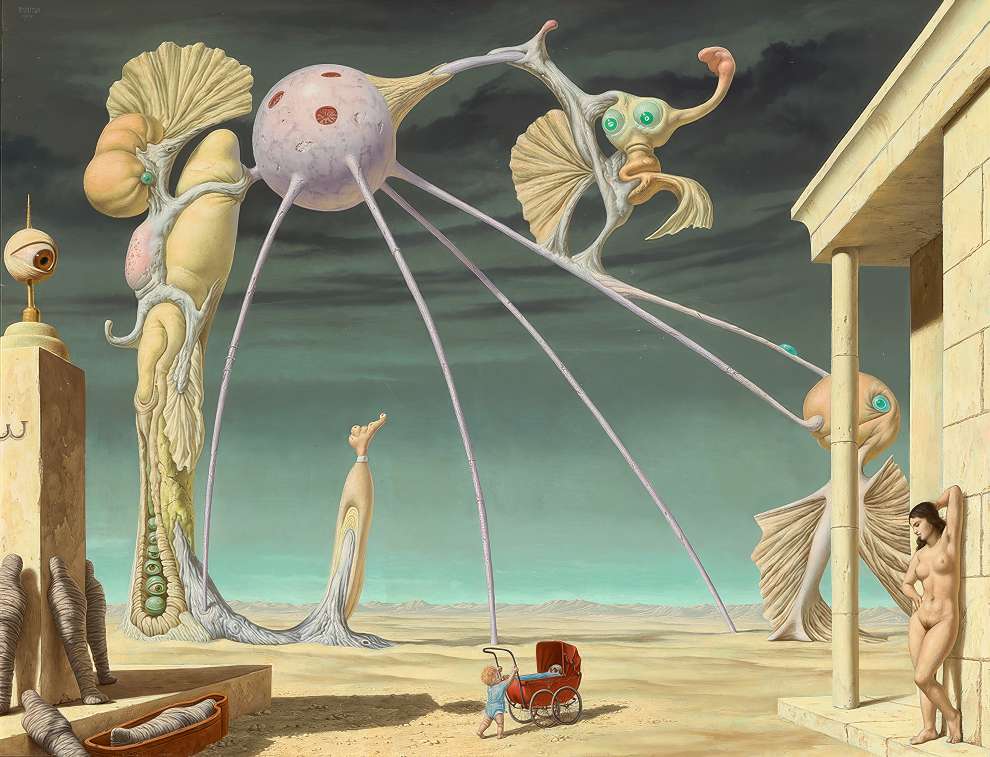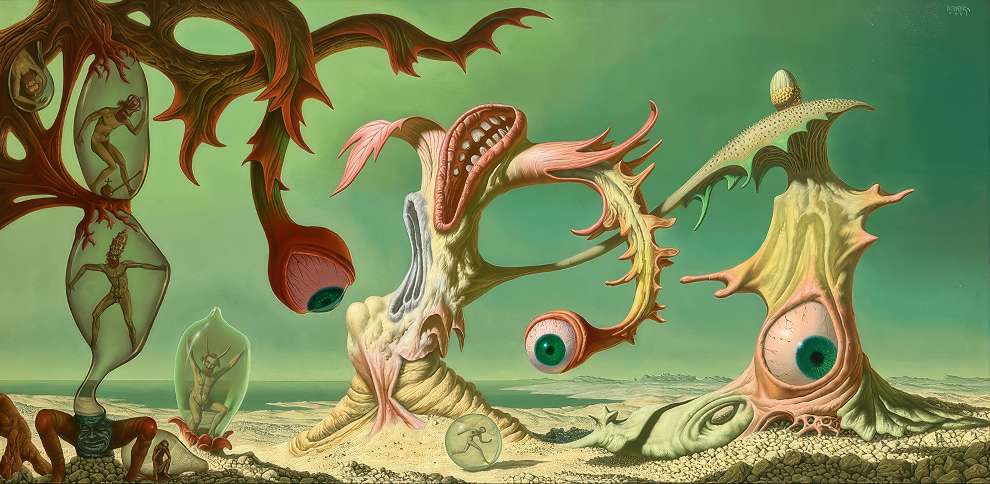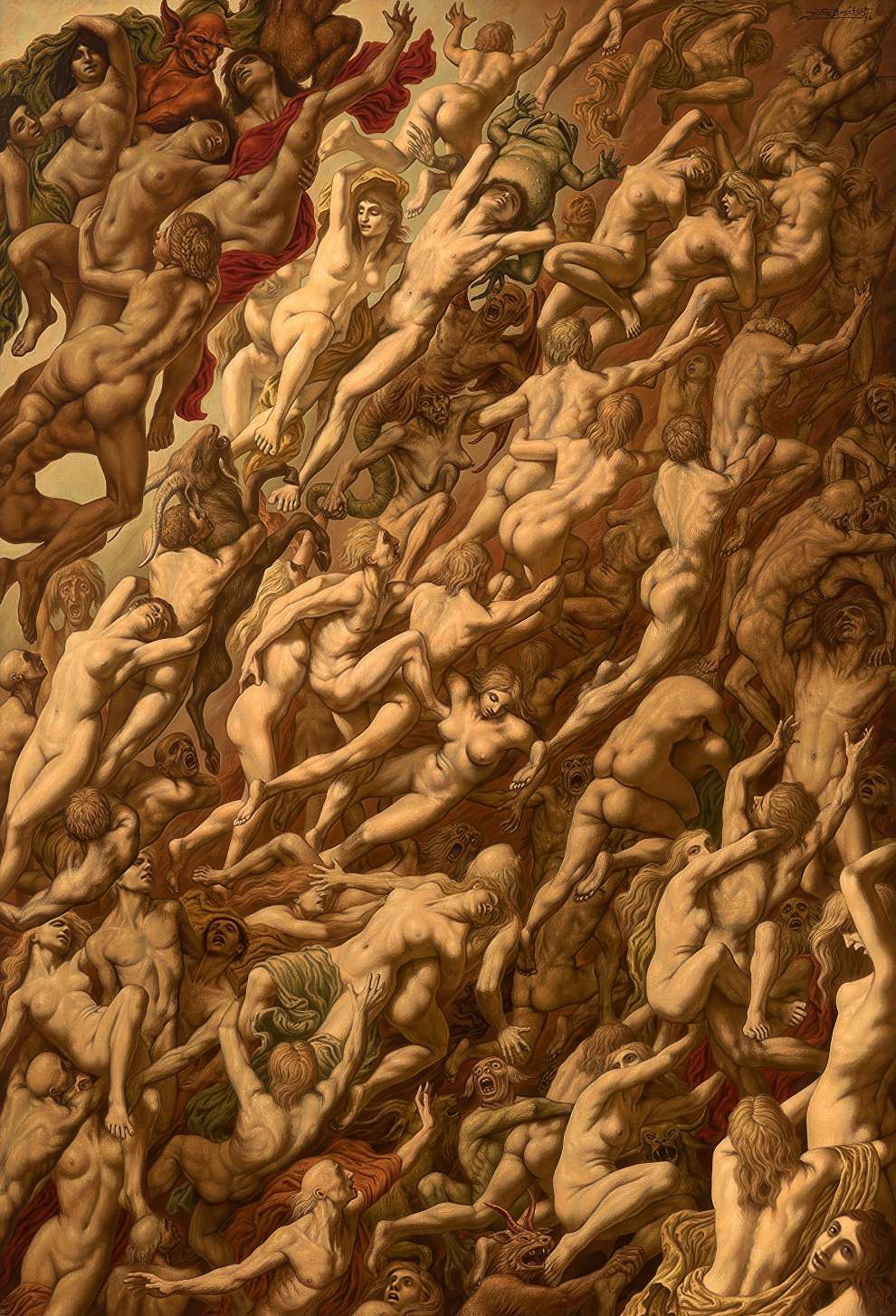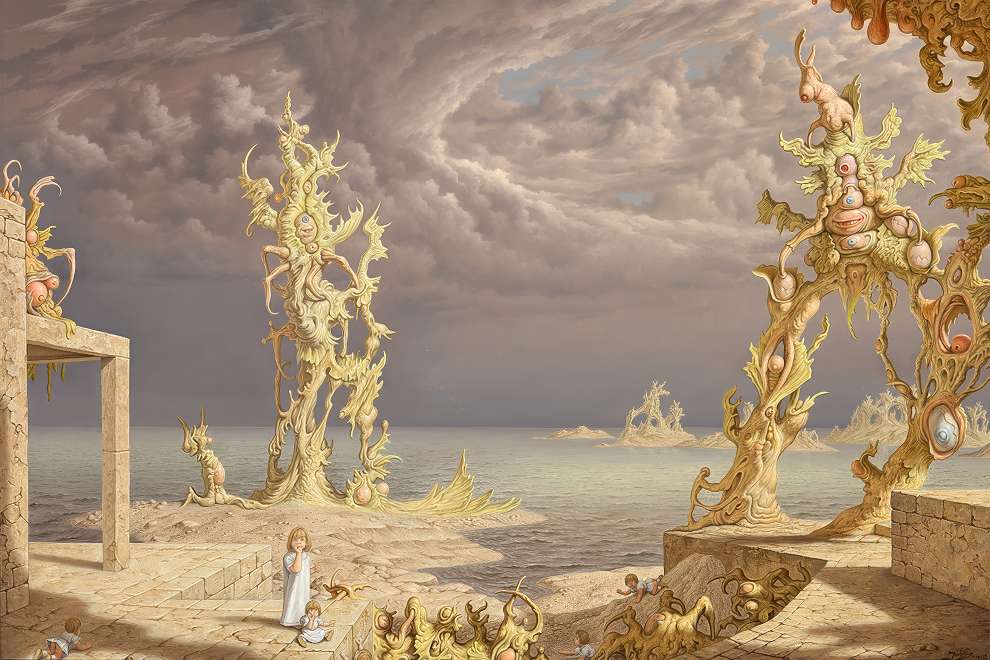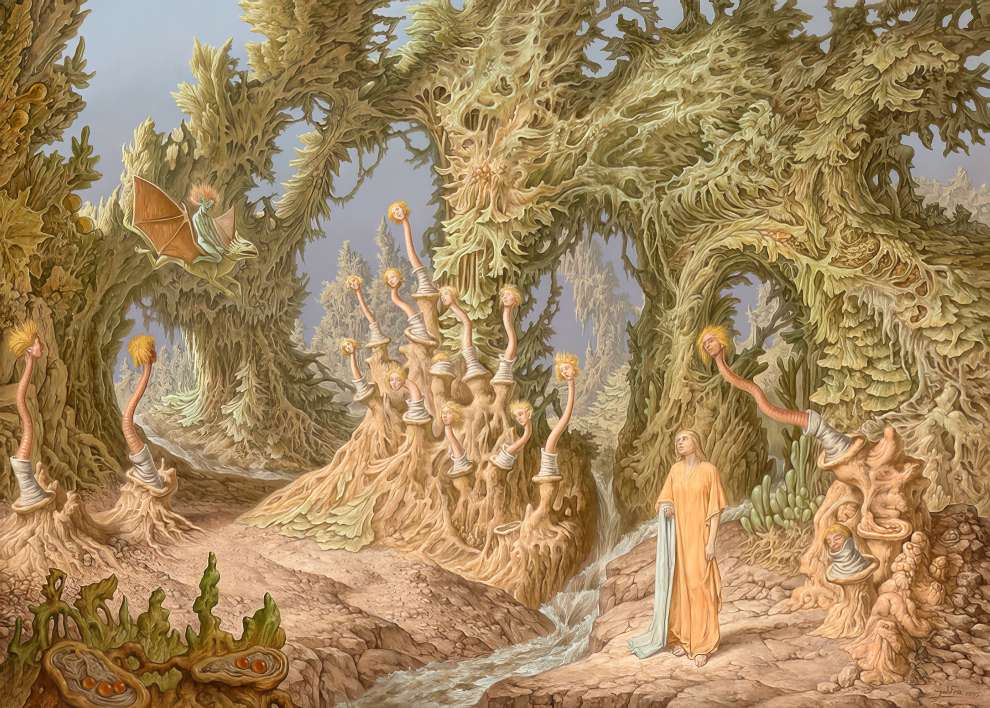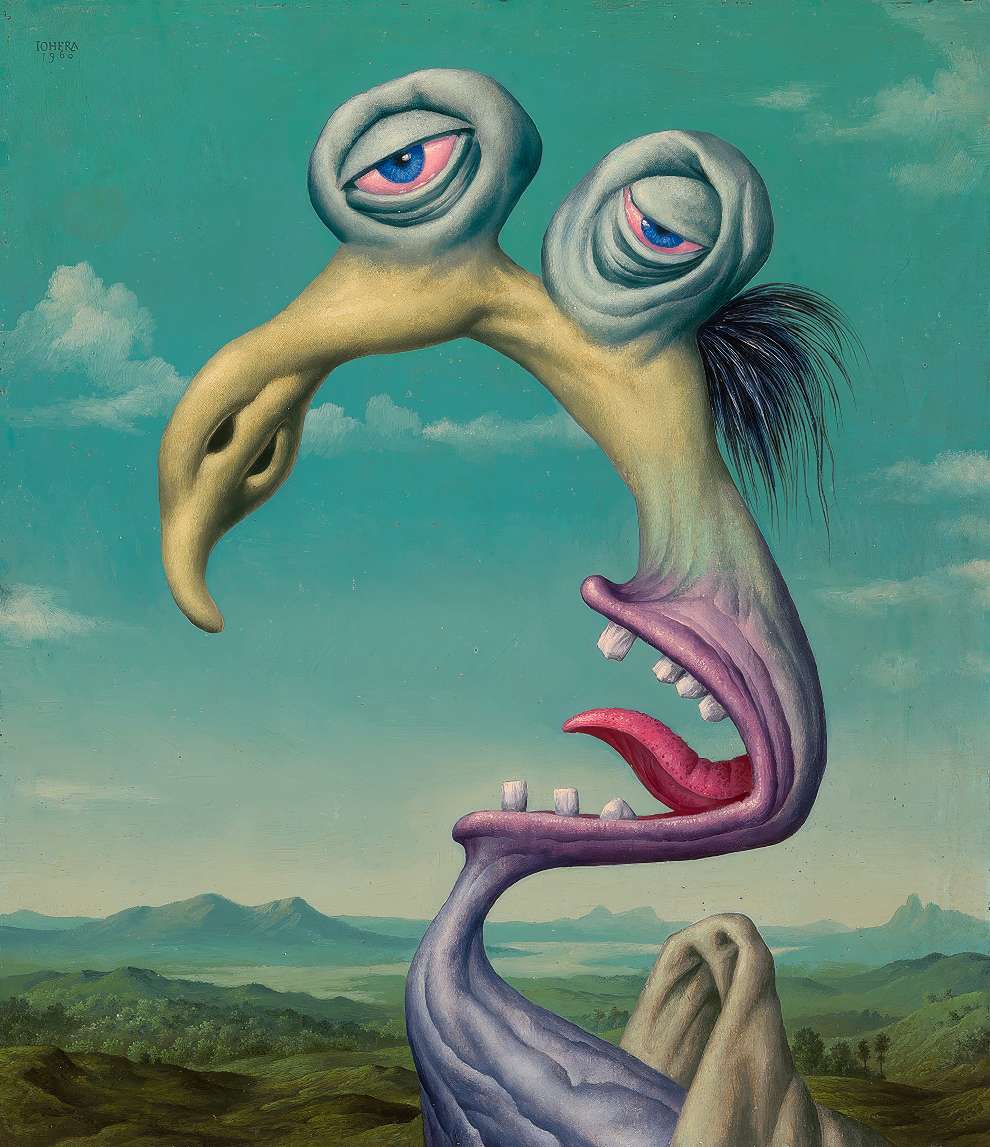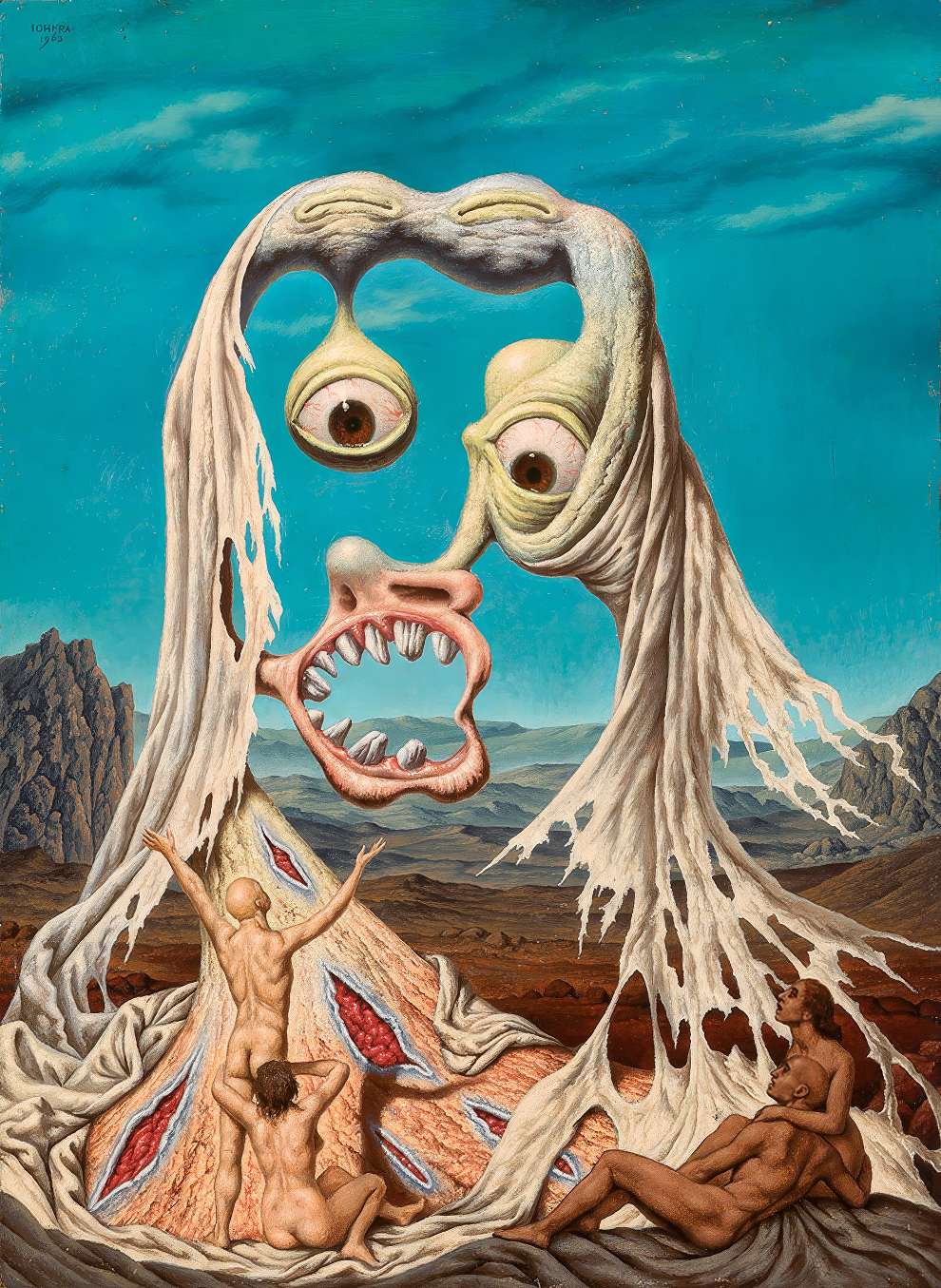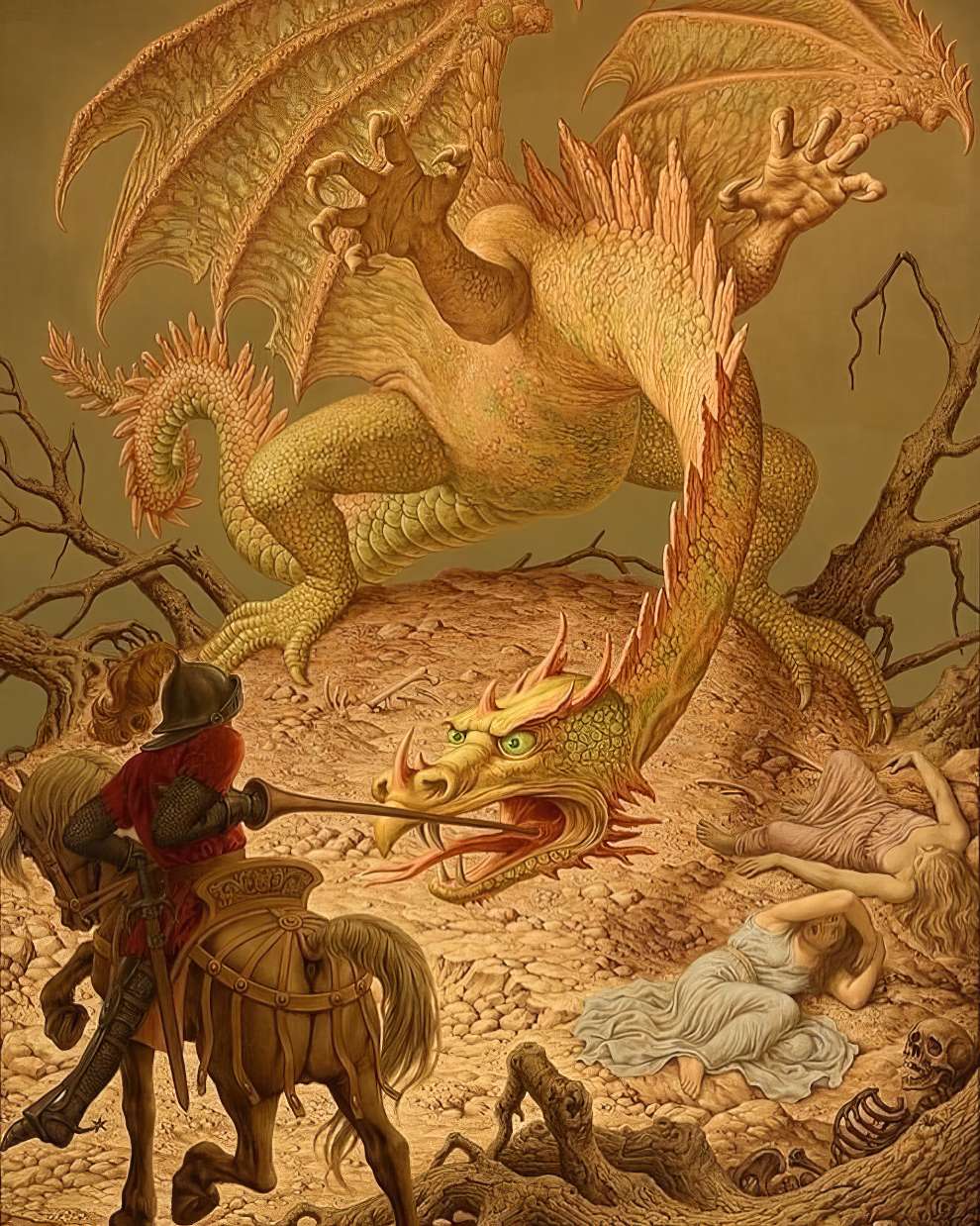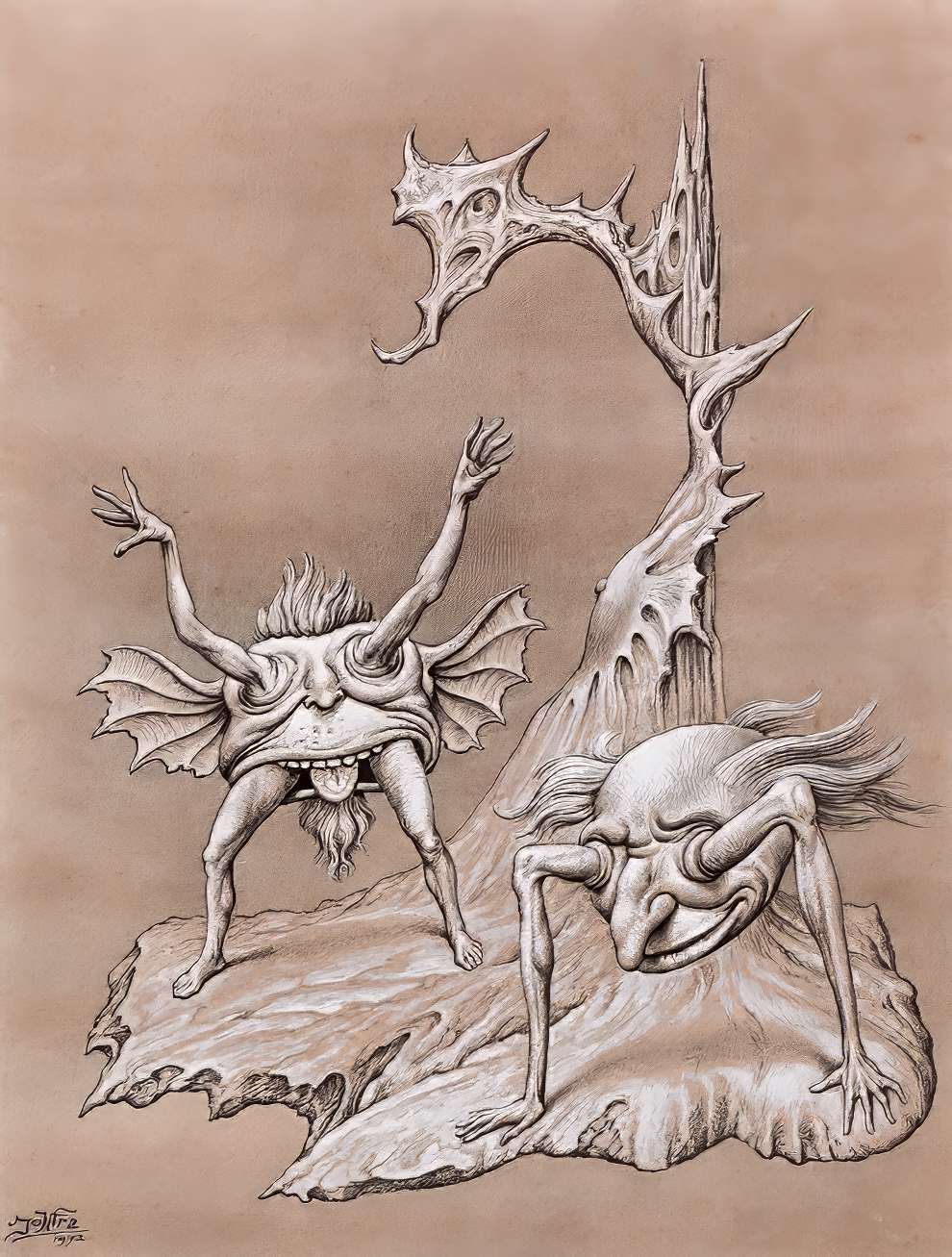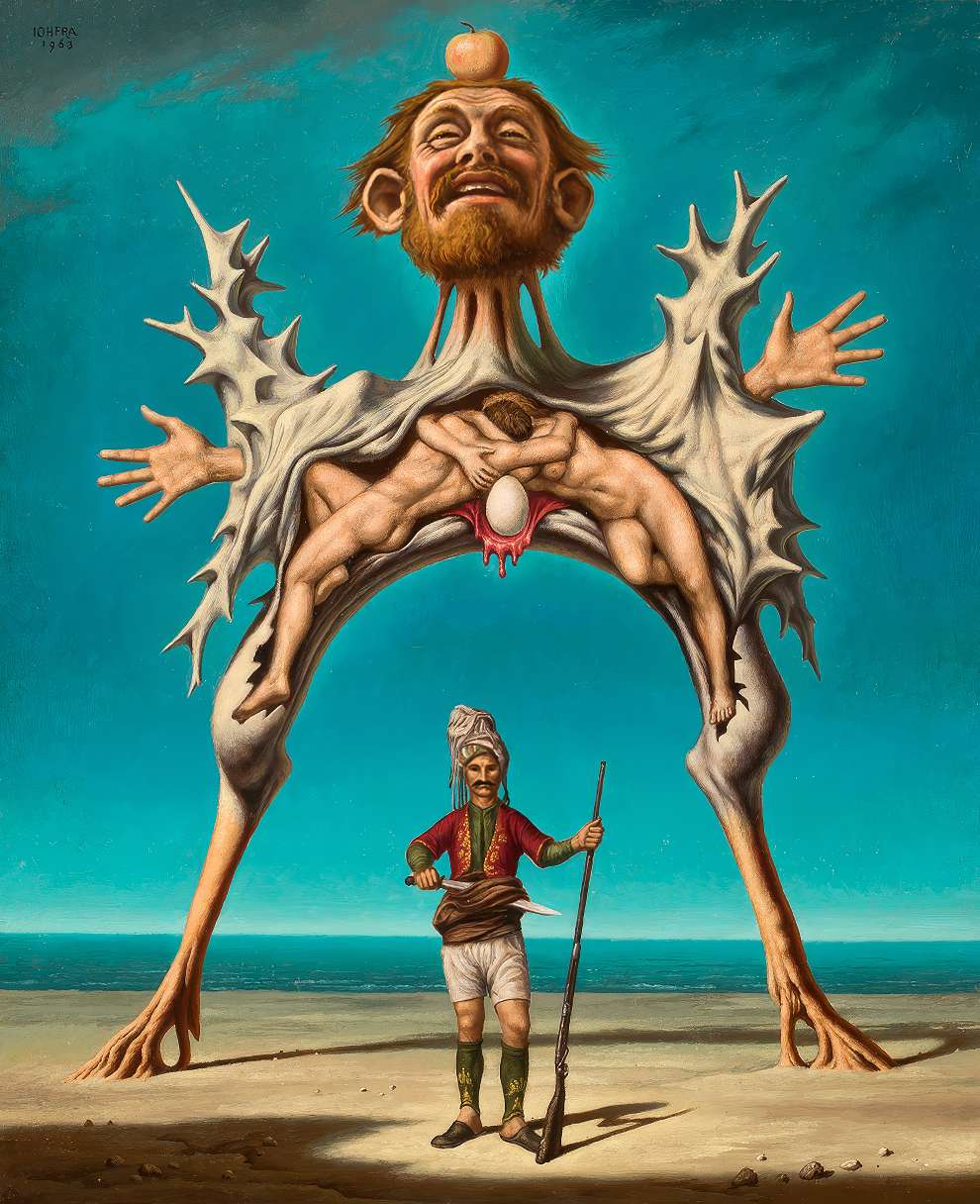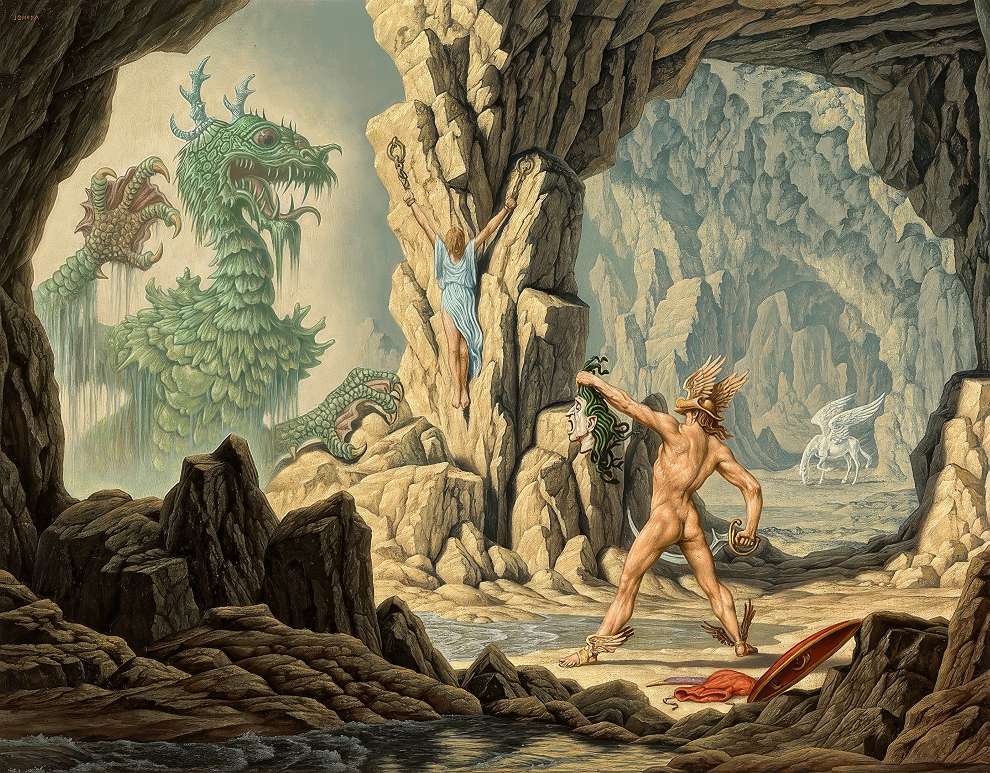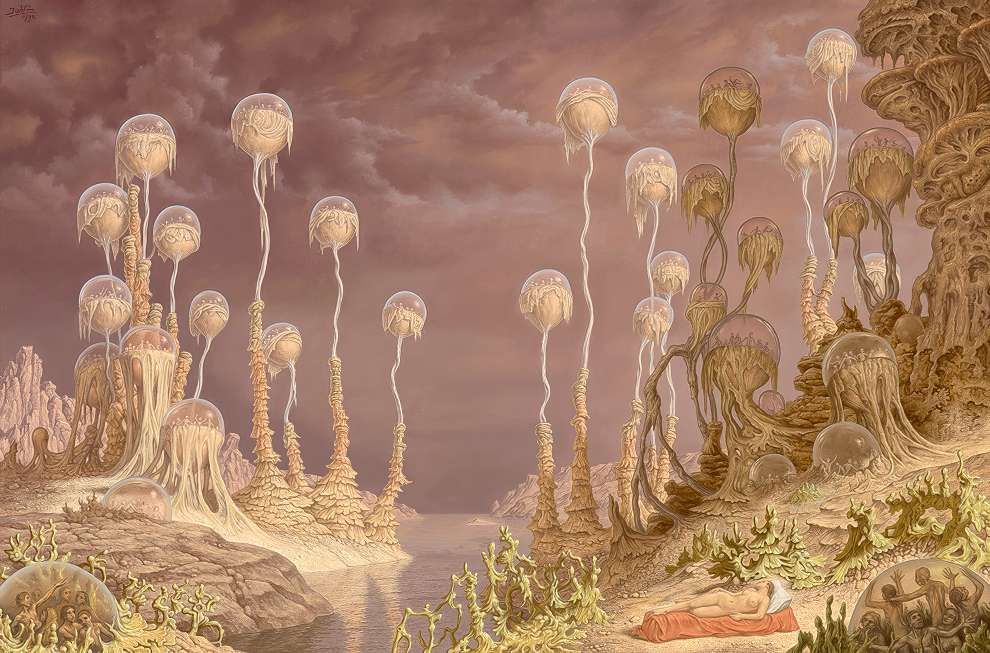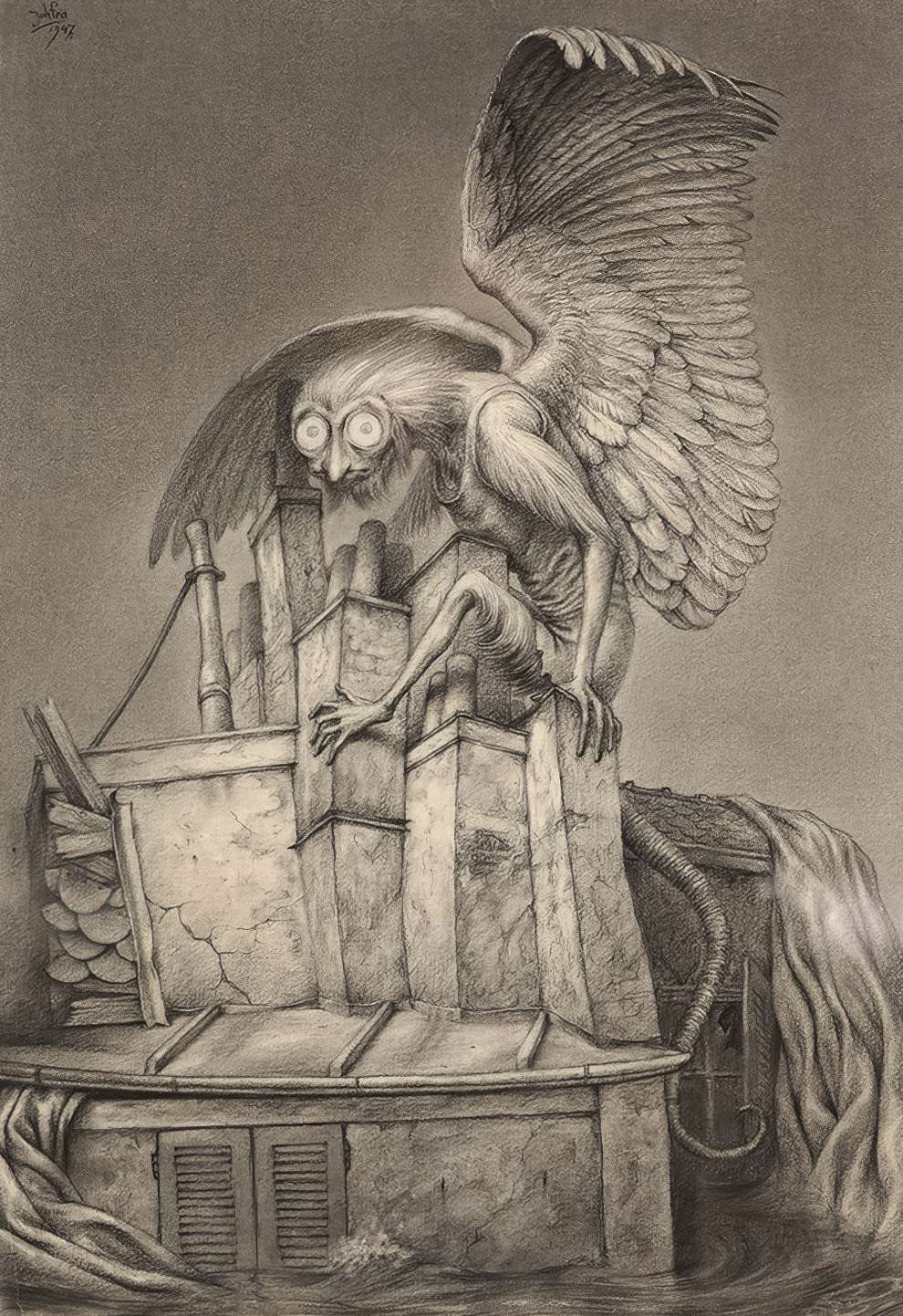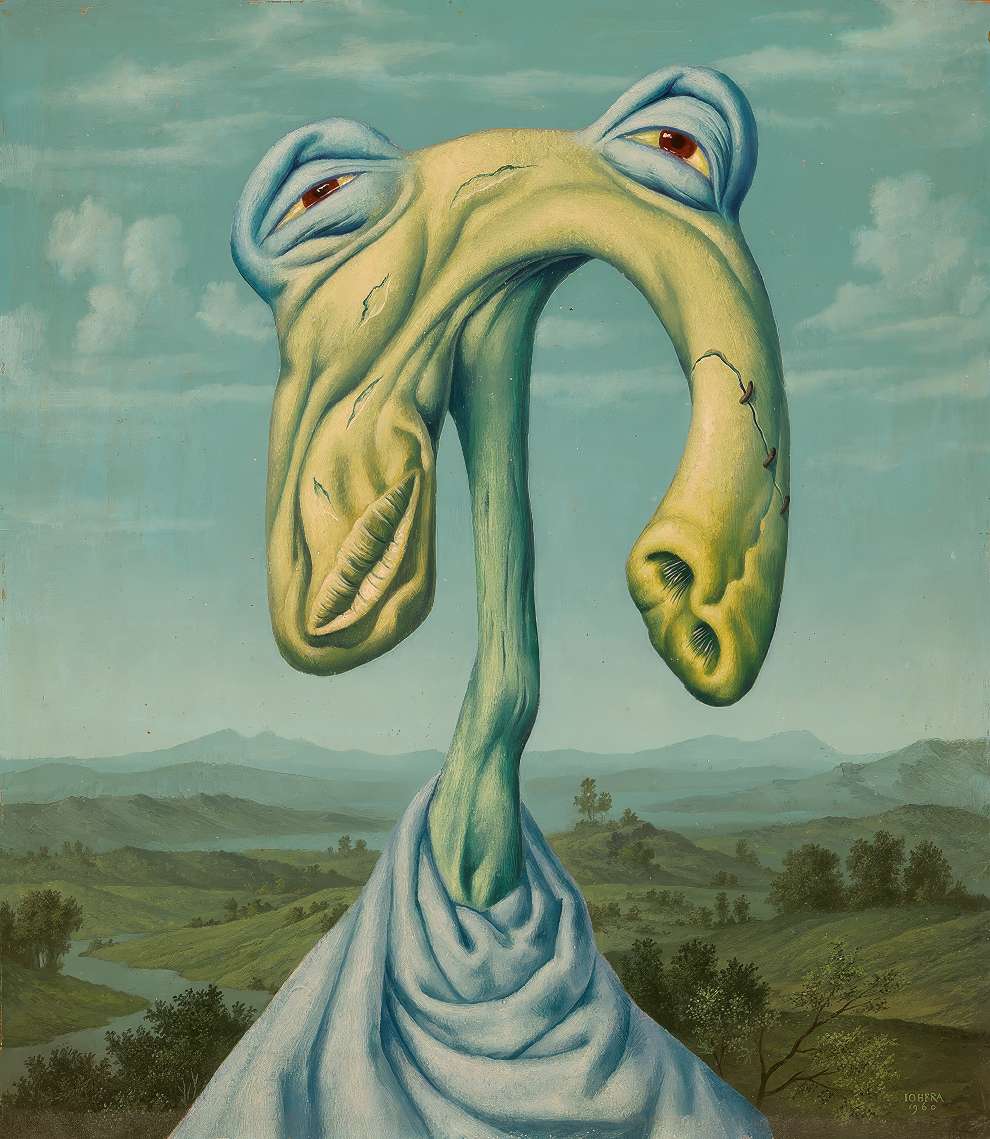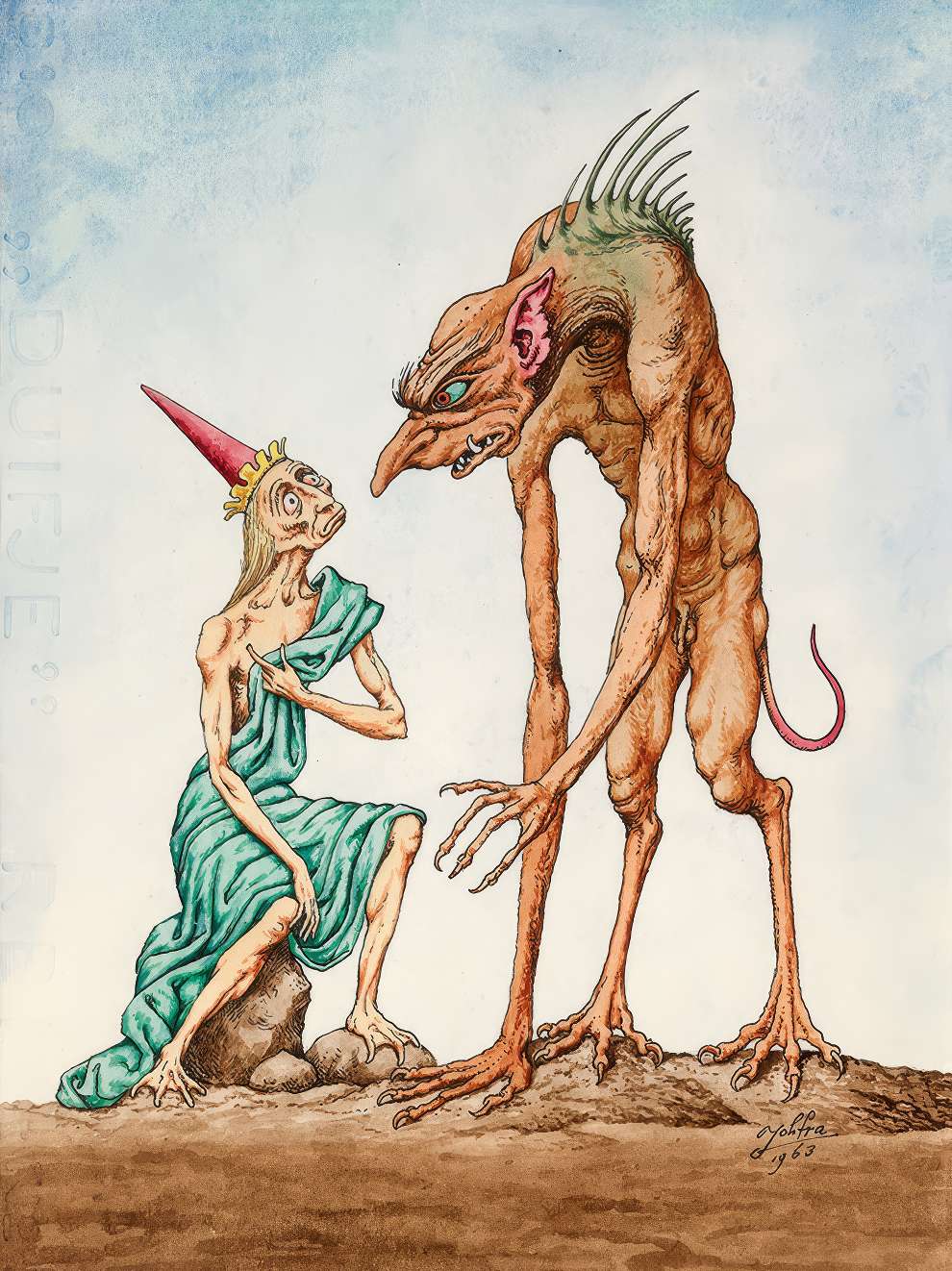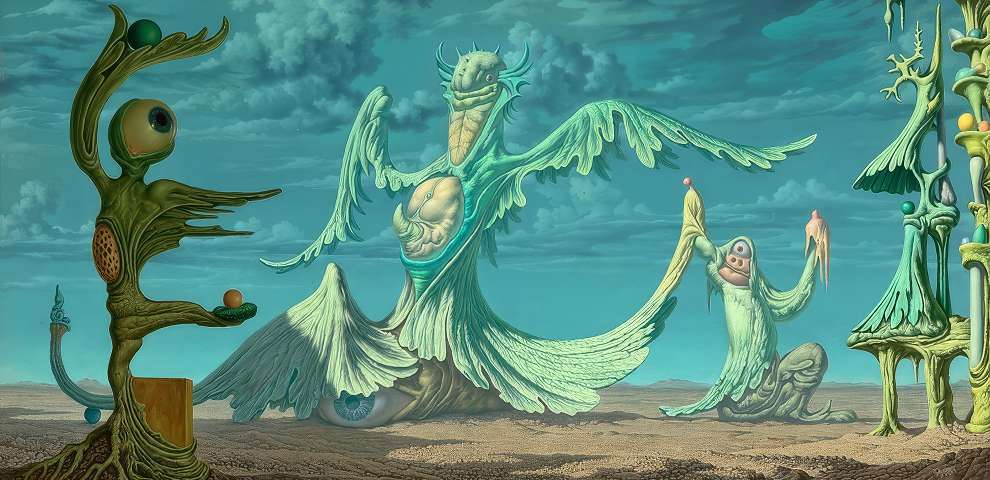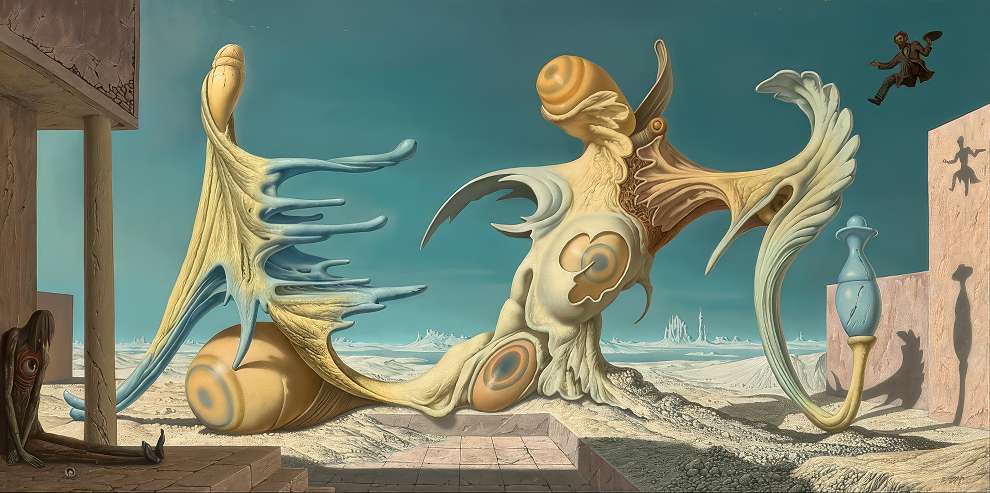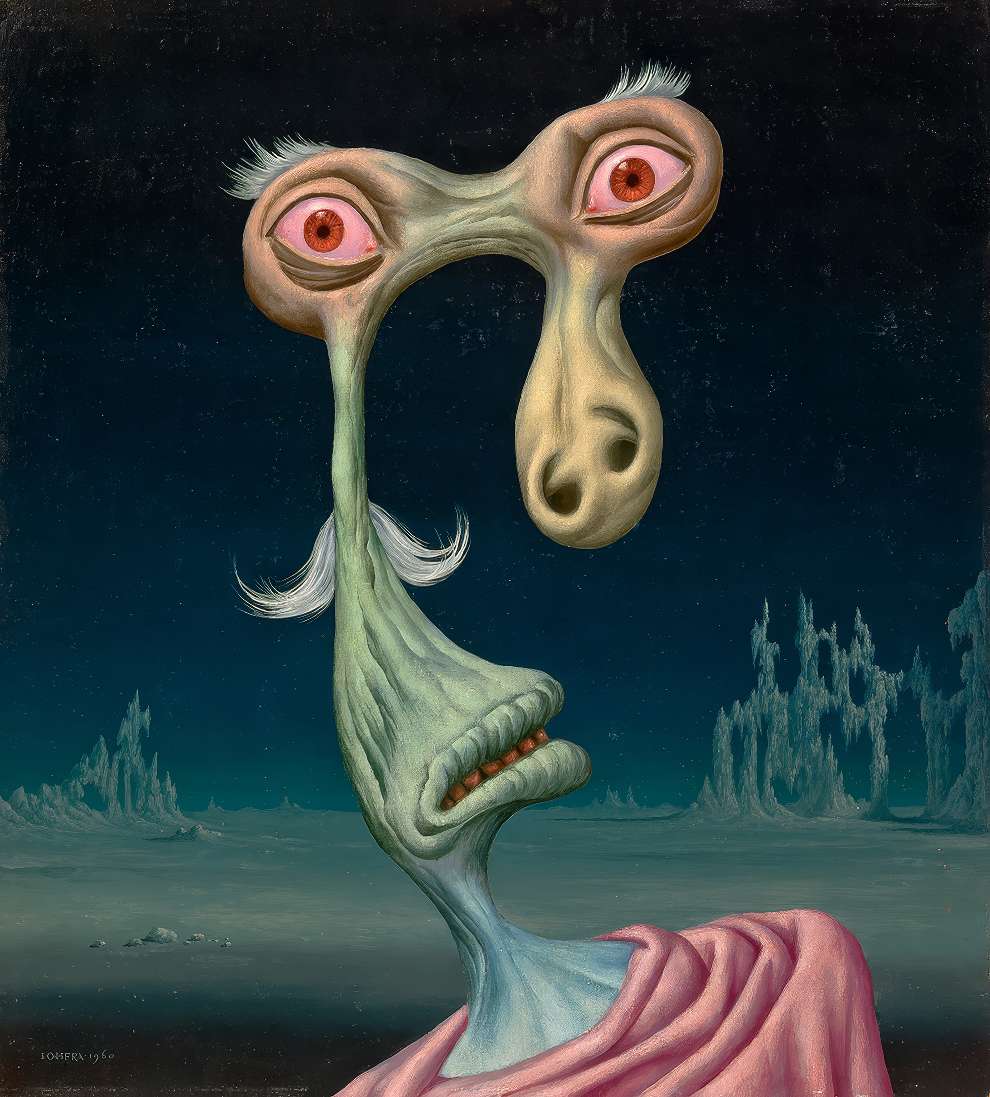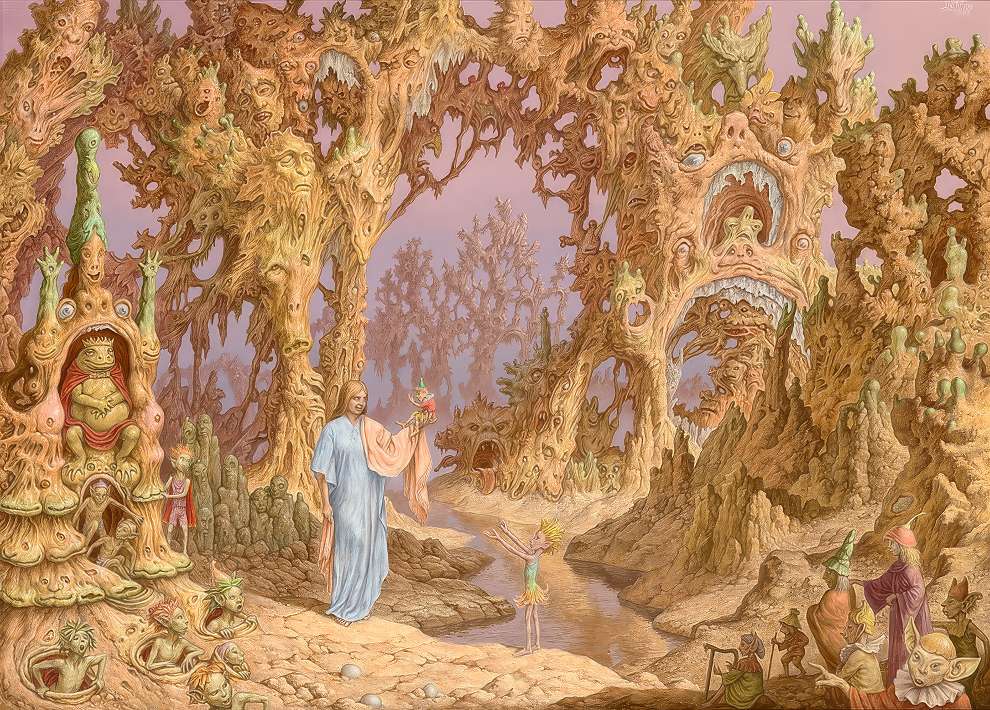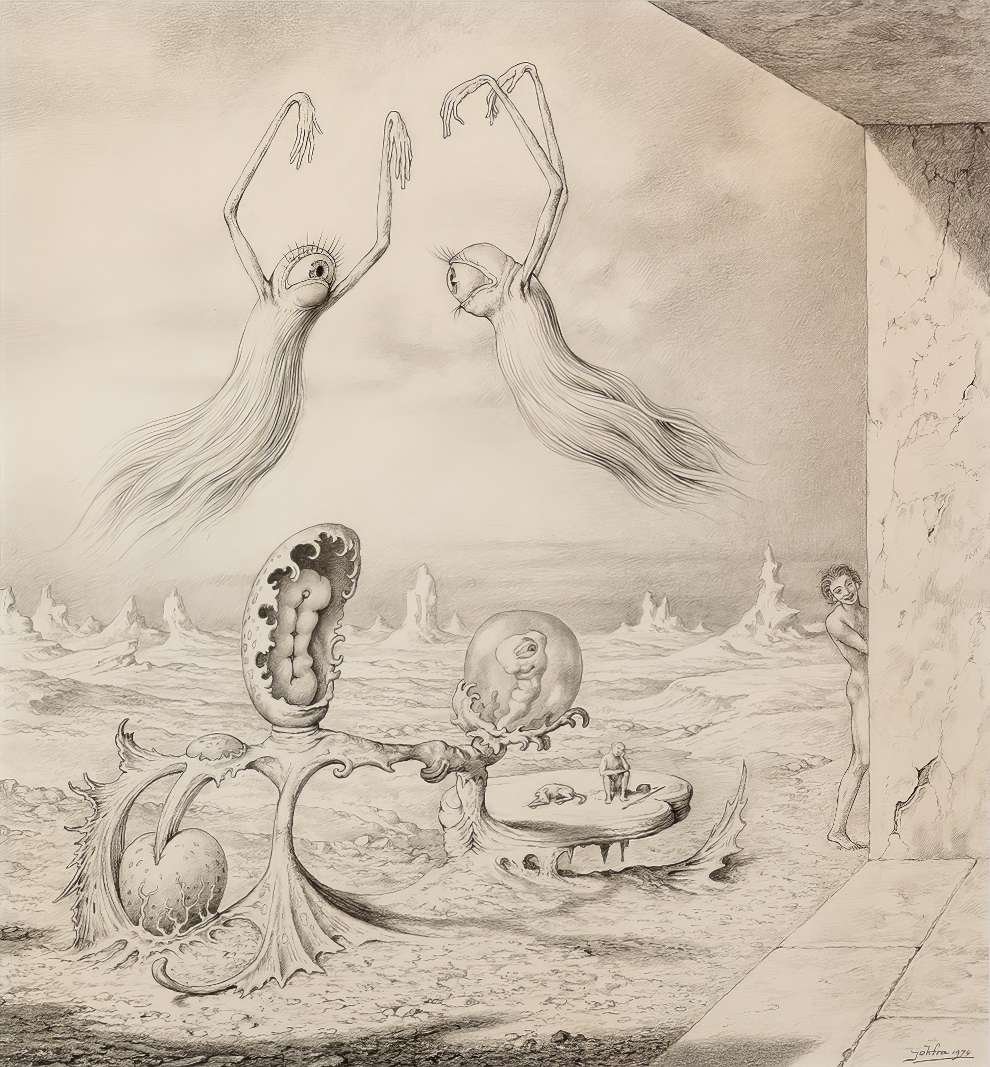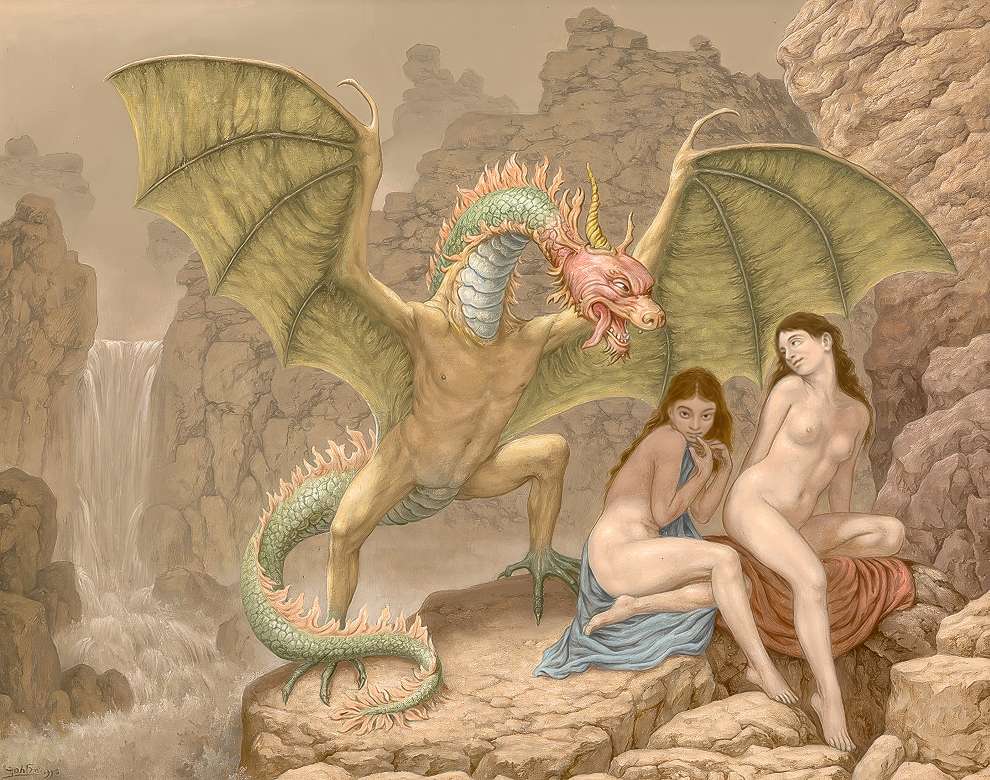Organic Landscapes, Emblematic Narratives and The Surreal and Fantastic Visions of Johfra Bosschart

Johfra Bosschart, born Franciscus Johannes Gijsbertus van den Berg, was a Dutch pioneer of surrealism and fantastic realism.
In 1945, he adopted the pseudonym “JohFra” using the first three letters of his first names in reverse order. Much of his early life was spent in The Hague, where he showed great artistic abilities from a young age and attended the Academy of Fine Arts.
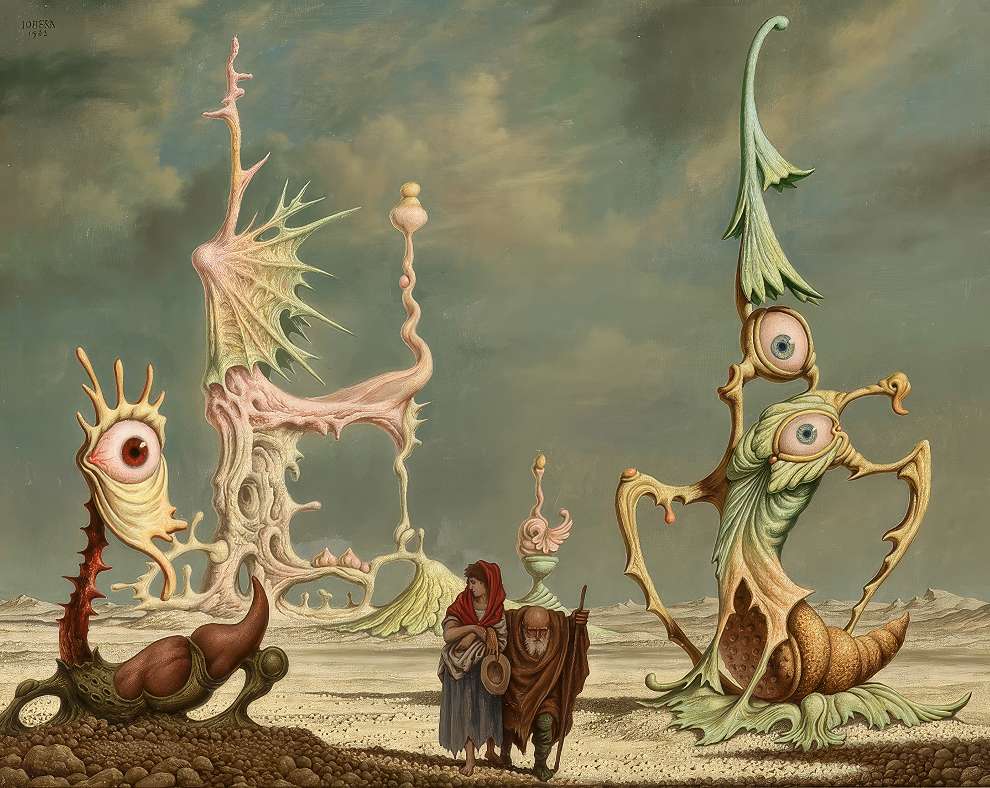
By 1943, Bosschart had assembled a significant body of work, but most of his early pieces were destroyed during World War II. After the war, he was exposed to the imagery of surrealist artists like Dalí, Ernst, Tanguy, and Magritte, which greatly influenced his own style. In the 1950s, he developed a distinctive organic, surrealist style, as seen in paintings like “Terra Incognita” (1955).
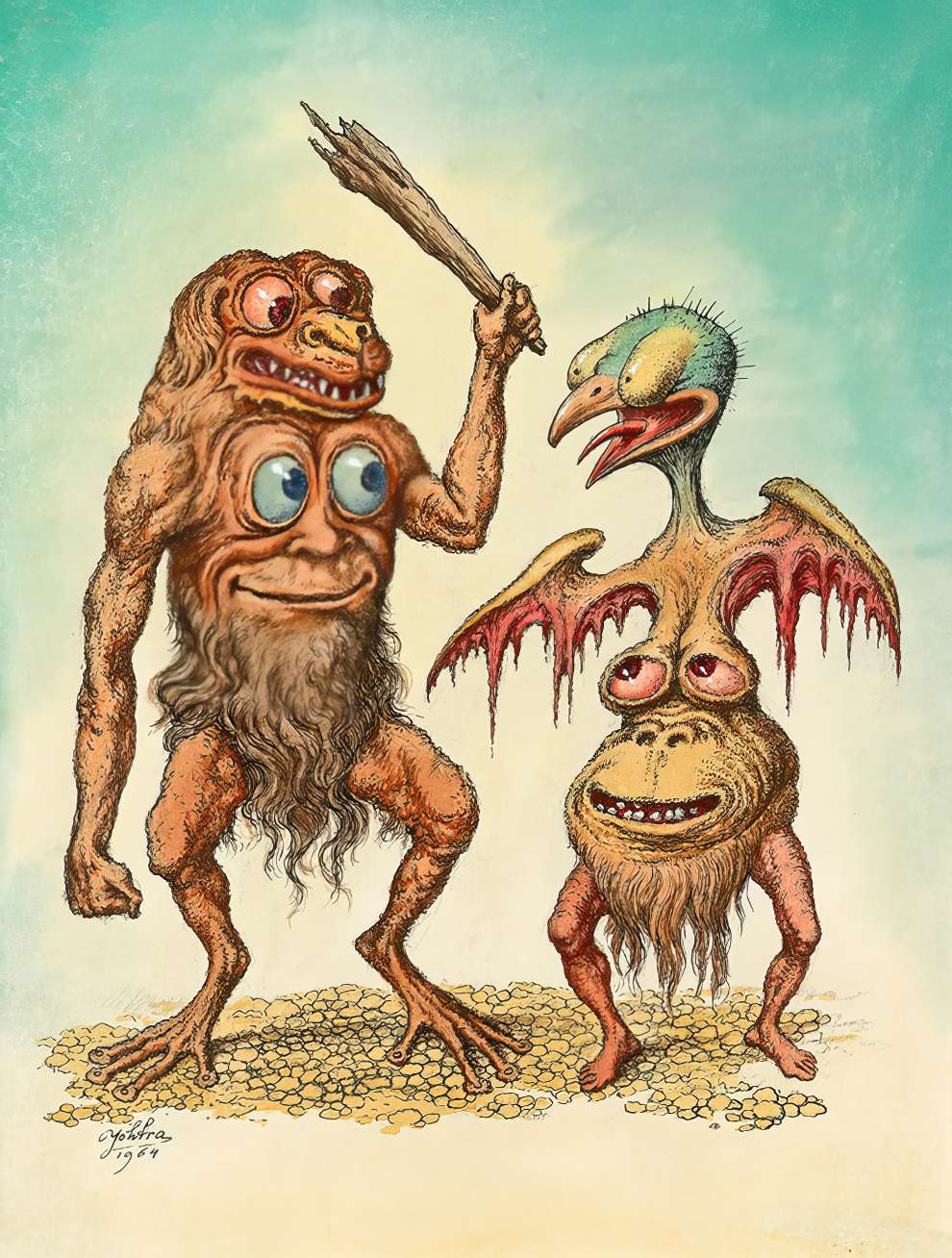
In 1959, Bosschart met with Salvador Dalí, though the encounter left him feeling conflicted. The 1970s marked a particularly productive period for Bosschart, during which he created many of his major works, including his popular “Zodiac” series. Though this series overshadowed much of his other surrealist output, Bosschart is recognized as an important figure in the development of surrealism and fantastic realism in the Netherlands.
